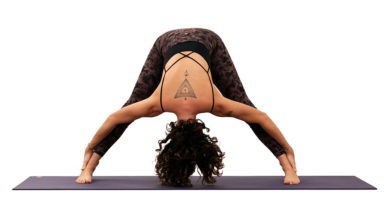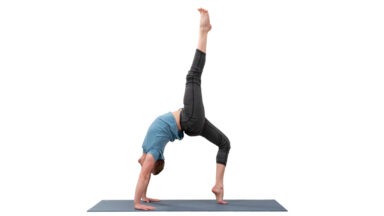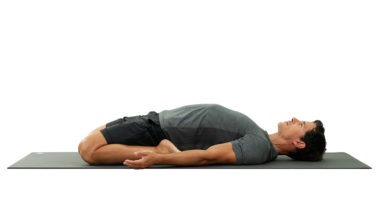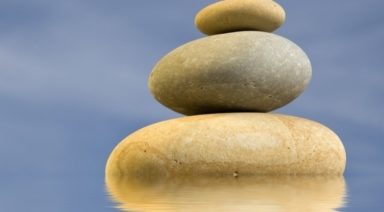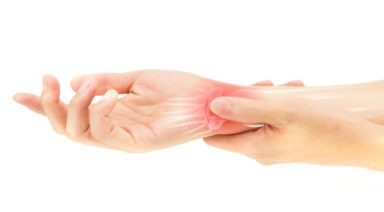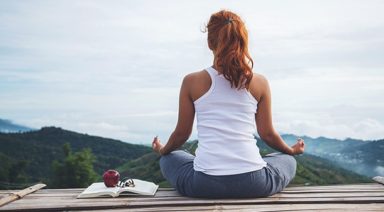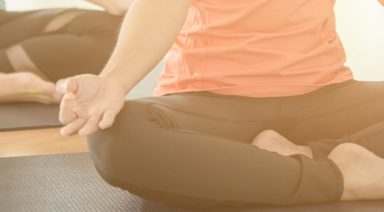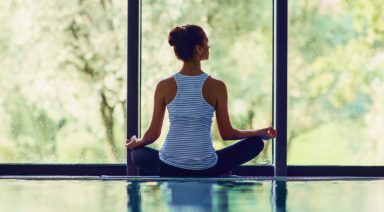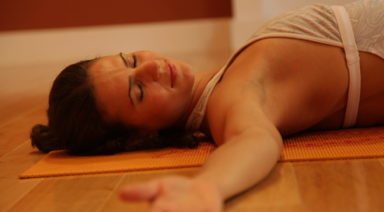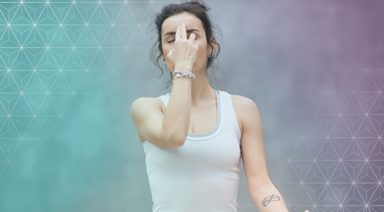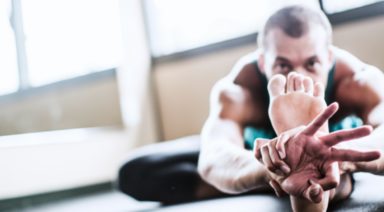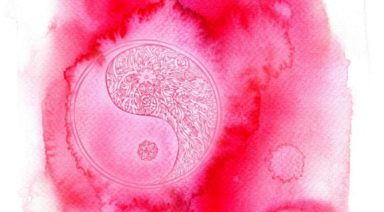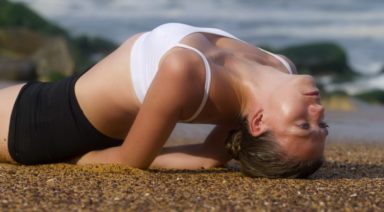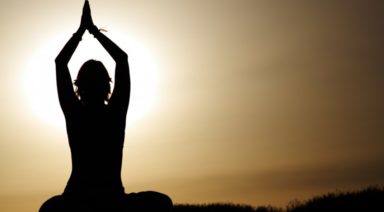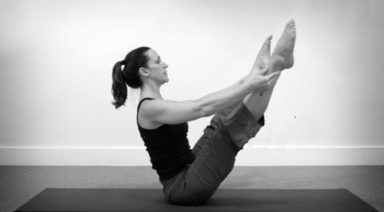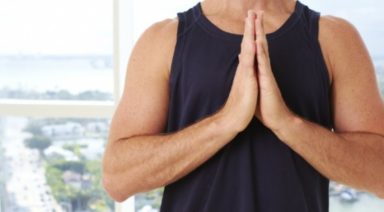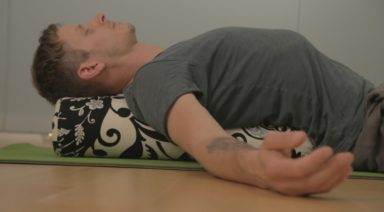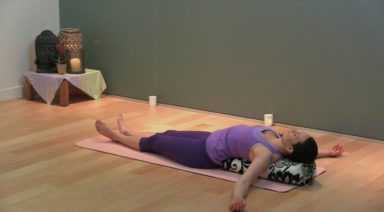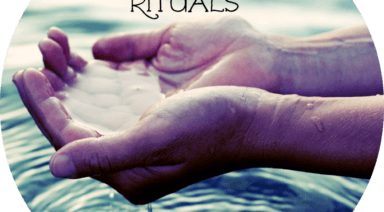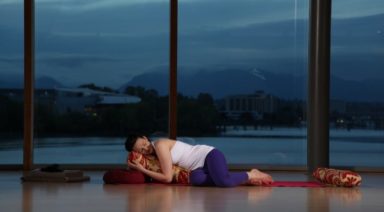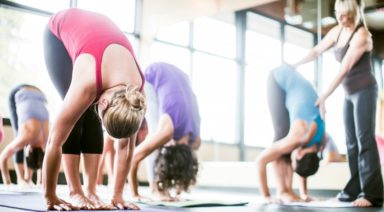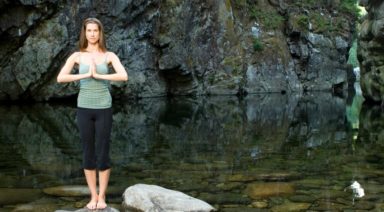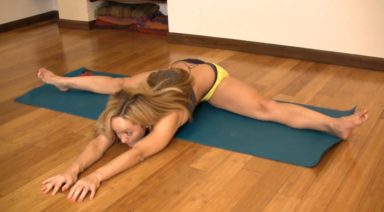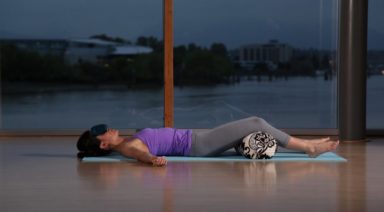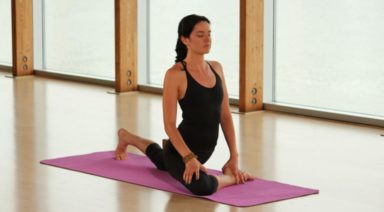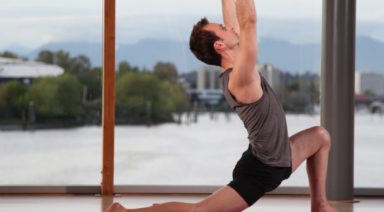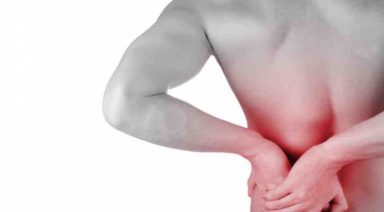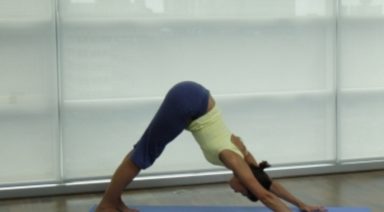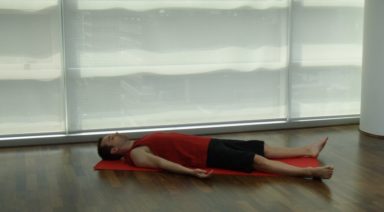Paschimottanasana: Seated Forward Bend Pose
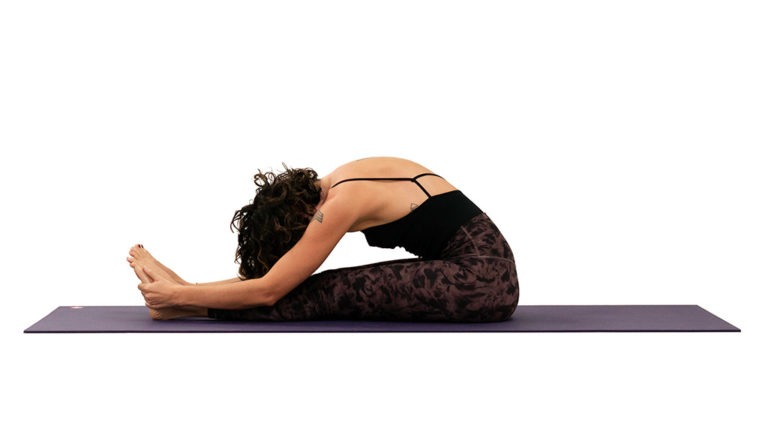
ADJUSTMENTS | BENEFITS | SEQUENCING | SANSKRIT | STEPS
Paschimottanasana (POSH-ee-moh-tan-AHS-ah-nah) invites space to the hamstrings and lower back as well as the mind. While there’s no need to touch your toes in this pose, practicing regularly can help lengthen the muscles in the legs and back to encourage flexibility and ease.
Philosophy + Origin
Paschimottanasana is one of the earliest-known yoga postures, dating back to the Yoga Pradipika. This pose is commonly known as seated forward bend or seated forward fold, but is also referred to as the stretch of the West, referring to the back side of the body.
ADJUSTMENTS/MODIFICATIONS:
- Place a pillow, bolster, or chair under your forehead for a more restorative variation.
- Option to sit in a chair with legs extended, then hinge from the hips to move into an accessible variation of seated forward bend.
STEP-BY-STEP:
- Sit on the floor with your legs extended. Flex your feet so your toes are pointed up, then press through your heels to lengthen your legs.
- Extend your spine by lifting your sternum up and broadening across your collarbones.
- Hinge from your hips while keeping the front of your torso long and extended. Draw your tailbone back as your chest reaches forward toward your toes.
- Find more depth by continuing to lengthen the front body and encouraging the sternum forward. If moving toward the connection of forehead to shins, the progression is lower belly to thighs, then upper belly, then ribs and finally forehead to shins.
- Allow the breath to move fluidly with you in the pose, using each inhale to lengthen and each exhale to hinge deeper.
- Hold the pose for up to 3 minutes before slowly releasing back to seated.
PREPARATORY POSES:
- Staff pose | Dandasana
- Standing forward bend | Uttanasana
- Childs pose | Balasana
SEQUENTIAL POSES:
- Half lord of the fishes | Ardha matsyendrasana
- Head to knee pose | Janu sirsasana
- Cobbler’s pose | Baddha konasana
COUNTER POSES:
- Corpse pose | Savasana
- Supported fish pose
- Spinal twist | Jathara parivartanasana
PHYSICAL BENEFITS:
- Stretches hamstrings, spine, and lower back.
- Thought to help relieve symptoms of PMS and menopause.
- Thought to ease insomnia.
SANSKRIT:
- Pashima = west
- Uttana = intense stretch
- Asana = pose
Legal Disclaimer Before participating in any exercise program or using any fitness products or services that may be described and/or made accessible in or through the Gaia Website and/or the Services, you should consult with a physician or other healthcare provider. Read more about Gaia’s Terms Of Use.
Prasarita Padottanasana: Standing Wide-Legged Forward Bend Pose

ADJUSTMENTS | BENEFITS | SEQUENCING | SANSKRIT | STEPS
Prasarita padottanasana (pra-sa-REE-tah pah-doh-tahn-AHS-an-uh) is a big stretch for the hamstrings and inner leg line. With many variations available, this pose is accessible for most practitioners. This is also a great pose in lieu of headstand.
Philosophy + Origin
Prasarita padottanasana has found its way into almost every style of yoga. B.K.S. Iyengar taught several variations of this posture, labeling them as A, B, C, and D. The most commonly practiced variation is prasarita padottanasana A. Prasarita padottanasana B is when the hands are on the hips and the head is lifted off the ground, not resting on the mat. Prasarita padottanasana C is the variation where the hands are interlaced and stretched behind the back and over the head as you fold. In the final variation taught by Iyengar, prasarita padottanasana D asks the student to grasp the big toe on each foot.



